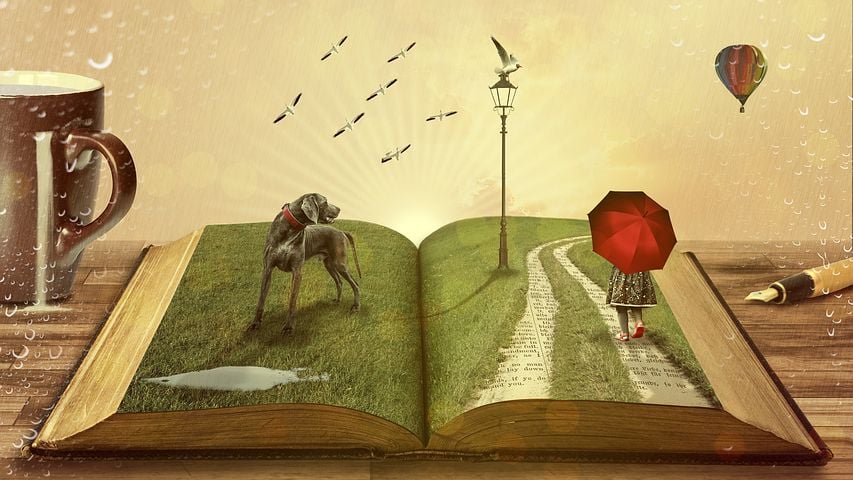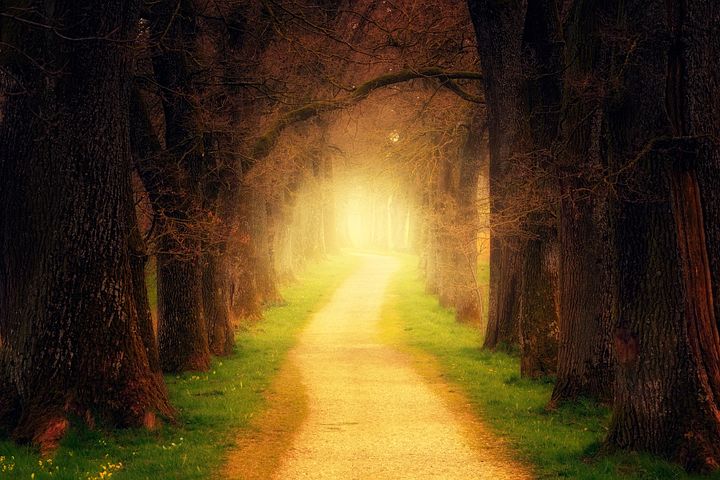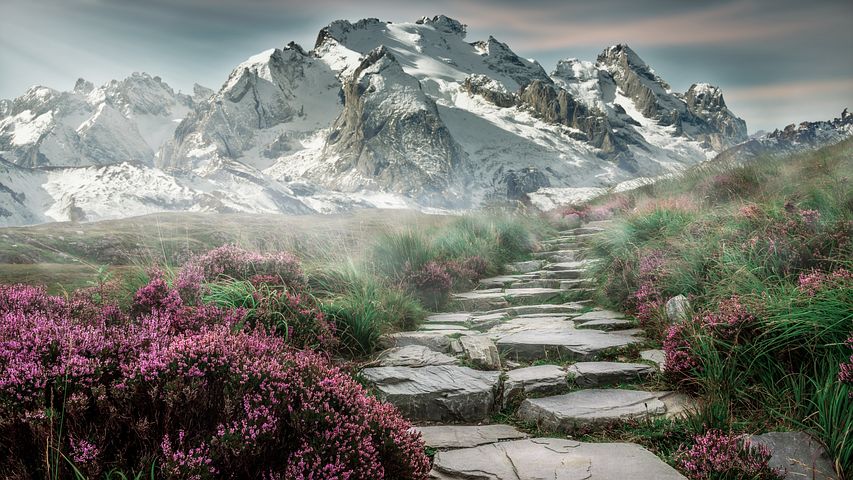Hi Mary-
It seems that there’s a lot of trauma about, which as I understand it is suffering that was too big for us at the time, and which we push away and disconnect from. It remains in our system affecting all aspects of our lives, until we do what Jung called “healthy suffering”, and really sit with it. In my mind we have to do that without setting a time-limit on it in the back of our minds, only then can it release. I really need to set myself to this, there’s always a part of me that would rather not.
Thinking about your “Awakening Guide”, I see that once I’ve got through my own “healthy suffering”, then I’ll find the suffering of my family line on my plate, then the suffering of my culture and so on out. It looks like this job will go on until I die. I find it very hard to want to keep at it. Do you have any words of encouragement?
– Richard

Hi Richard-
When we look at the whole map of what lives within us it is easy to get overwhelmed, or feel a sort of learned helplessness, powerlessness, and futility. On the largest of levels– the mythic level (see my Spiritual Awakening Guide) we suffer under the belief that we lack the power and capacity to truly change our lives.
The simple truth is that we have so much more power and capacity than we are taught that we do. We are told and sold the idea that we are the victim and that we are powerless so we do not question if we can truly change our minds, our hearts, and the way that we live our lives.
It is rare for people to move beyond the bounds of their childhood history. We are children, in adult suits, living out the wounds and pain of not feeling the unconditional love and support that we were entitled to in our childhoods.
When we do not receive this, we spend our whole lives attempting to prove to the world that we are good enough, and believe (falsely) that if only we were perfected enough the whole world (and our parents) would truly love us.
We have lived with this pain and played out this script for so long that we believe it is permanent. It is not. The way we were “programmed” or made to feel in terms of worth and love in our childhood is not reality. When we realize this, it is life-changing.
Our childhood pain is finite and we can move past it.

We can get to a point where who we were as children and who we are as adults are two separate beings, and the pain of childhood– while being a part of our history– becomes a closed book, lying dusty on the shelf, instead of something we re-enact again and again in our present reality.
This does take working through how we feel, looking at our issues regarding self-worth, approval, and what barriers we have within us to offering and receiving love.
However, doing this type of work is well worth it. If we can move beyond the considerable weight of our childhoods the rest of the work of spiritual awakening becomes something that we know that we have the power and capacity to work with.
There comes a certain point in which the work we have put in bears fruit, and we can recognize that the way we see ourselves, the way we treat each other, and how we live changes to such a degree that we cannot help but see who we are and who we were as drastically different creatures.
When we see the light of this, the emptiness and fear and powerlessness within us subsides, and each step that we take towards wholeness creates more space for us to simply live our lives.
The effort of spiritual awakening changes from a dreary trudging through the darkness of trauma to the recognition that in our darkness lies the light and truth of our being.
Yes, it is a lot of layers of Self to get through. So many prefer to play a role of awakening rather than truly walking the path because it does require considerable effort to embody depth work. It requires dismantling who we thought we were, how we see ourselves, and how we see one another again and again.
This dismantling, no matter if you are working on childhood pain, ancestral, or more mythic considerations (how we live out archetypes, for example), is in the midst of things confusing and dramatic. It is like having a firehose burst free with affect and pain unearthing itself. But the more that we resolve the conflict within, the more peace and compassion emerge, and the more that we can feel flow, instead of that firehose bursting with pain and new conflicts to contend with.
When we learn to sit with our emotions, with the parts of ourselves that are wounded, with the layers of history that still live out through us, we can offer them acceptance and conscious awareness.
When we do this, the empty, screaming void within us begins to fill. It is through the darkness that we see the light, and that we can have the capacity to carry this light.
When we see this light, when it envelops us, even if it is for a brief moment, we know that all of our pain is a result of disconnection, and that this work is about reconnection. That reconnection leads us to oneness, to wholeness. Every step we take towards reconnecting the disconnected parts of ourselves leads us to that oneness.

So my encouragement to you, Richard, is to keep going. The pain and conflicts within that seem like they are ever-lasting are not. If we learn to sit with them, to keep going, they subside. We become more connected, more compassionate and can then see the world as a mirror, and the people in it as our greatest teachers, reflecting back to us some small part of ourselves.
At the base of our being is love that flows through the webs and layers of our realized connectedness, and we can let go of the shields and walls we have erected to isolate and disconnect us in our pain. It is by grounding deeply into our bodies, our emotions, and by accepting every last part of ourselves that we can find ourselves connected to the many webs of reality.
We are so used to doing battle against ourselves, and telling the parts of ourselves that are wounded that they need to be something other than they are. The wounded parts of ourselves are used to being told that they are not worthy, that they cannot be loved, and that they need to be cleansed, purged, or otherwise released from our system. If we can instead love every emotion, every part of our physical bodies, every part of our being, exactly as it is, we can find a type of radical acceptance that offers us a peace and stillness that very few achieve.
On a much simpler level, when we are on a substantial spiritual path it is easy to look at the pain we still need to sit with, instead of what we have already achieved. Look at who you are now and who you were five minutes ago, or five years, and celebrate how far you have come. It takes effort and willingness to change, and it is no small achievement to do so.
My encouragement to anyone is to recognize that spiritual awakening is a path, an embodied path, that many have walked before. It is easy to stagnate, or to play a role rather than walk down that muddy road, but with sincerity, humility, and curiosity, we can find our way through. The darkness we muddle through eventually turns to light, if we allow it to.
Mary Mueller Shutan is a spiritual teacher and author of several books, including The Spiritual Awakening Guide, The Body Deva, and Working with Kundalini.
For those who are awakening and are looking for a method to process what is arising, I recommend my book, The Body Deva.
You can find her on Facebook and Instagram or sign up for her mailing list to be notified of new blogs…

You nailed the firehose metaphor.
Paul, and I would add, it feels so natural…
Hi Richard-
Yes, you are feeling your own pain that you see mirrored in other people. You can use a tool like the Body Deva book, when you notice such things in others, and ask where in your body you hold that pain, and resolve it. The outer world does show us our internal pain through what we react to and pay attention to.
When your own pain is resolved, you will still see it in others, but it will be more of a noticing, rather than an emotional reaction. You may feel empathy for them, but in time the pain you see in others can be more of a compassionate knowing (as you have known that pain/misery too) rather than seeing your own internal pain reflected outwardly in another.
Thank you very much for this.
I was in town yesterday and I saw many people in what I felt is deep misery, whether they were aware of it or not. I have historically disconnected from them, but now I feel their pain much more.
Presumably I am feeling my own pain, which they are mirroring. Will I be able one day to connect to their pain without becoming miserable myself?
I’ve been doing the tree grounding exercise in nature everyday next to a tree, that Mary suggests in her book the Spiritual Awakening Guide. It has been transformative in bringing up and clearing blockages in the lower energy points. I have been doing this for nearly 6 months and the difference in me is profound. I’ve noticed now, that all other energy work that I do, is also now much more effective.
Great post Mary.
I would argue that we can be both empty and full at the same time 🙂 (bit of consciousness humor) but yes, those screaming parts of self when they quiet the sort of blankness of mind and body that is entered into is quite something. Thanks for commenting, Paul
Thank you Amanda! I do agree that for all of us discerning on a regular basis whether we are walking the path or pretending to is essential. It allows us to move forward from those common stuck places.
Fantastic way of describing this path, and particularly as mentioned ” playing the role of awakening which seens to be a stumbling block with many of us, its a tough one to navigate, the pushing of themselves around and around, painfully searching and trying to be, by not being and allowing the ego self battle to continue, and yet its comes many times in waves before its deeply recognised but in the recognition brings a sense of peace,the calming after these storms for sure reveal the need to just be..
Wouldn’t it be fantastic to have that understanding & education at early childhood. brilliantly described Mary so thank you for your wisdom and insight.
The strange day, when you look yourself in the mirror. The screaming voices in the abyss have been addressed. You realize you feel empty inside…. And it feels sooooo good.